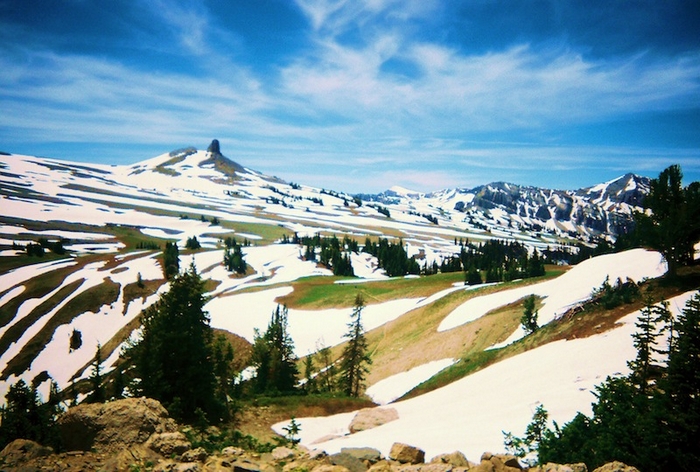Thru-hiking the Appalachian Trail, Pacific Crest Trail, or Continental Divide Trail is hard. Most fail. I met many successful pilgrims on the trail, and I tried to look for a common thread. Here are some characteristics I thought they would share:
- Wealth: I figured you might need the financial wherewithal to support the multi-month journey. Wrong: one guy (Cheapo) hiked from Georgia to New York on $20.
- Good gear: Those who travel with shoddy equipment are surely at a disadvantage. Wrong: A man from Concord, California thru-hiked with the same old, decrepit gear he had 35 years ago.
- Superior nutrition: Poor nutrition would certainly catch up to you during the hike and hamper your ability to finish it. Wrong: A few thru-hikers survived mainly on Snickers and other junk food.
- Excellent cardiovascular conditioning: Thru-hiking is the ultimate endurance sport, so surely cardiovascular fitness is paramount. Wrong: In Virginia I met George Ziegenfuss who blew that theory—he was in his sixties and hiked the AT with only one lung.
- Disease-free: Your body should be healthy and free of debilitating diseases. Wrong: Sticks and Stones, two ex-military men, thru-hiked together to raise money for Leukodystrophy, which Sticks battled. Although Leukodystrophy is a progressive disorder that affects the brain, spinal cord and peripheral nerves, it did not stop Sticks from thru-hiking the AT.
- Youth: I initially thought that being young and strong was a common denominator. Wrong: I recalled the first female thru-hiker I met (Jean)—she was in her sixties. Others have completed it in their seventies. In 2004, Lee “The Easy One” Barry became the oldest person to ever thru-hike the AT: he was 81. The fastest thru-hiker our year was Linsey, a man who biked from California to Georgia, hiked up to Maine in about 72 days, and then biked back to California. He averaged about 30 miles a day on the AT and never took a day off. He was 63.
- Sight: OK, at the very least, you should be able to see the trail! Right? Wrong again: a blind man, Bill Irwin, hiked the whole trail with his trusty Seeing Eye dog named Orient. It took him nine months (50 percent longer than average) and he fell hundreds of times, but he made it.
I was dumbfounded. I couldn’t seem to find a common denominator among all the successful thru-hikers. Yes, the majority was young, strong, ate healthy food, carried lightweight gear, and could actually see the trail, but there were so many exceptions. It wasn’t until I hit Georgia that I figured it out.

Francis Tapon is half Chilean and half French and he was born and raised in San Francisco, California. He’s been to over 80 countries, but he keeps coming back to this magical city because he loves earthquakes.
He spoke Spanish at home, French at school, and English everywhere else. He can get by in Portuguese and Italian, barely survive in Russian and Slovenian, and speak a few other languages.
Francis has an MBA from Harvard Business School and co-founded a successful Silicon Valley company that did robotic vision. He left his technology life to walk across America four times. He has thru-hiked the Appalachian Trail and the Pacific Crest Trail, and in 2007, became the first to do a round-trip on the Continental Divide Trail. In 2009, he was one of the finalists for the California Outdoors Hall of Fame, which “features nominees who are world-renowned for their skills and who have helped inspire thousands of others to take part in the great outdoors.”
Francis has written a couple of travel books including The Hidden Europe: What Eastern Europeans Can Teach Us and Hike Your Own Hike: 7 Life Lessons from Backpacking Across America. He also produced a 77-minute video about his CDT Yo-Yo.









